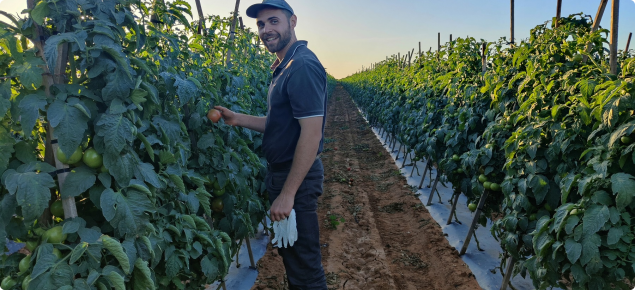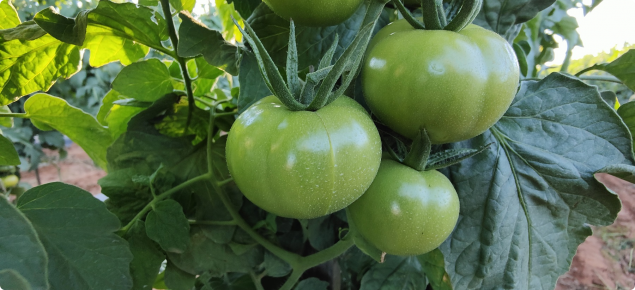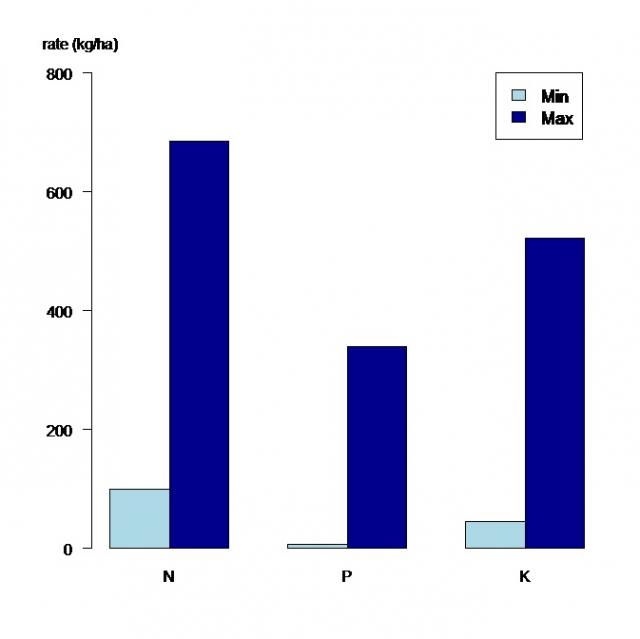2016 benchmarking study
In 2016, a benchmarking study was conducted by Neil Lantzke and Truyen Vo to assess the fertiliser and irrigation practices of 10 tomato growers in Carnarvon. They found that the rates of both fertiliser and irrigation varied significantly without a corresponding difference in yield.
2022 follow up study
A follow-up study was conducted in the autumn of 2022 by DPIRD research scientist John Kammann, to benchmark current fertiliser practices and to assess for possible changes since 2016.
The 10 tomato growers in Carnarvon were interviewed about their fertiliser usage, and soil and leaf samples were collected from each property at two different stages of crop development. The quality and shelf-life of tomatoes was assessed from each participating grower.
Key findings
Variation in rates and timings
Figure 1 shows the huge difference in the maximum and minimum rates of nitrogen (N), phosphorus (P), and potassium (K) used by participating growers. There was also a significant variation in the timing of applications, with three of the 10 growers relying on one bulk application pre-planting followed by semi-regular microbial applications, while the other seven growers applied fertiliser via fertigation every 1-3 weeks. Soil and leaf tests showed no relationship between the amount of N, P, and K applied and crop nutrition, suggesting that growers could reduce their fertiliser rates without affecting crop health.
Abundance of soil potassium (K)
Plant-available K ranged between 600 and 1500 kg/ha in the top 15 cm of soil at each of the grower’s properties (assuming a bulk density of 1 g/cm. Such concentrations should be sufficient to meet crop K requirements without additional K input. At a minimum, this will allow for flexibility in the timing of K applications.
Timing is key for nitrogen (N) fertilisation
The soils on the grower’s properties had less than 1.5% organic matter. A test of potentially mineralisable N found that the soils could provide a maximum of 6 kg/ha of N across a week from the breakdown of this organic matter. This means that the supply of N to the tomato plants is mainly regulated by the timing and rate of fertilisation. A second soil test at mid-harvest showed that some crops had access to less than 15 kg/ha of N, and due to the low mineralisation rate these crops were vulnerable to running low on N between applications.
Management affects quality
Shelf-life assessments demonstrated that tomatoes of the same variety, picked at the same colour, could have very different shelf-life characteristics depending on the way they were grown. Some of the produce would likely be considered sub-standard by consumers due to poor colour development, softness, and low sugar and acid contents. The breadth of management practices and varieties used made it difficult to identify the specific factors causing these problems, and for this a replicated trial will be needed.



